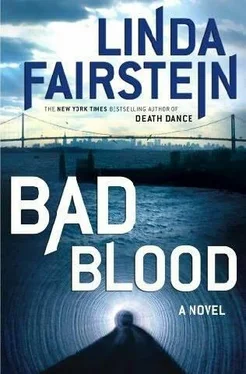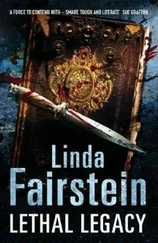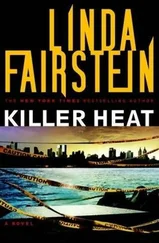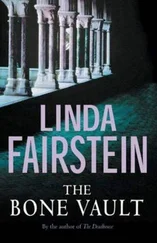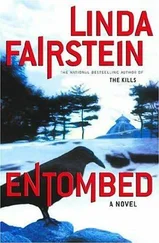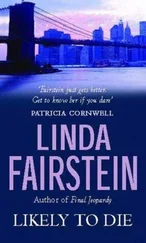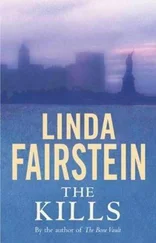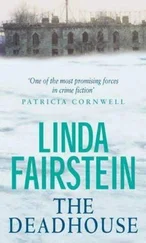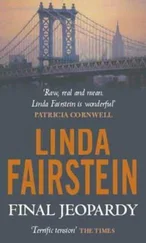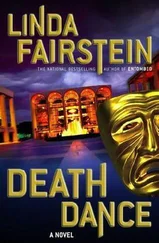Lem Howell followed him into the empty courtroom and perched on the edge of my table. There was no use complaining about whatever ex parte conversation he had been having with the judge. Their friendship went back longer than mine, and they would both deny that their conversation had included the Quillian case.
“Artie, how many jurors have we got?”
“Nine, so far.”
“Any of the missing call in?”
“Yeah, number two,” Artie said as he approached the bench. “She got as far as Penn Station on the IRT, then she had a panic attack while the cops were stopping kids all around her to search their backpacks. I told her to get out and take a cab and we’d reimburse her. The others must be stuck underground, Judge. The radio’s reporting lots of delays.”
“So, Mr. Howell, how do you propose we pass the time? Miss Cooper?”
Lem liked to use the subterfuge of personal chitchat to stick his nose in my pile of papers, hoping to pick up some clues to the nature of the evidence I’d be presenting in days to come.
“I’m hoping, Your Honor, that Ms. Cooper will tell us how she pulled that sleight of hand last night. Whatever did you do, girl, to create that midtown miasma? My Kate Meade moment lost in the headlines to this commotion in some big ol’ hole in the ground. I know Alexandra had something to do with it.” Lem lifted a blue folder from the table and waved it over his head. “Right here, Judge, it’s her ‘dirty tricks’ file.”
“The first of many, Mr. Howell. Something stayed with me from those early days under your tutelage,” I said to Lem before responding to the court. “Do we have a stenographer? Would you be willing to hear argument now, Judge, on the domestic violence expert I plan to call?”
“Good idea. Artie, see if the court reporter is in the hallway.”
Lem walked up to the bench and tried to sweet-talk the judge before we resumed the formal proceeding. “Seems to me there’s nothing beyond ordinary understanding that these jurors need to hear. We’re not talking scientific methodology, are we? She has no business calling an expert on this issue. Alexandra doesn’t have a scintilla, not a shred, not a speck of medical evidence suggesting any violence in the Quillian relationship. No injury, no police reports.”
“Help me make my argument, Lem. That’s precisely part of the reason I need this witness.”
Artie Tramm returned with the official stenographer, who carried her compact machine and its tripod toward the front of the room.
Lem was wise to ask for an offer of proof to try to knock my witness out of the case. By forcing my hand early in the trial, I would have to give the judge-and the defense-a preview of the points I hoped to make. If I lost the argument, it would be a major blow to the case I was trying to mount.
“Let’s have the defendant,” Gertz said, waving his robed arm at Tramm again. “Bring him in.”
Now, without jurors or spectators present, the court officers opened the door on the far side of the bench and I could see them unlocking Brendan Quillian’s handcuffs as they led him from the holding pen. He was compliant and cooperative with his jailers, unlike most felons being brought to court, offering up his wrists to them like a gentleman and thanking them as they freed him to enter the room.
Jonetta Purvis called the case into the calendar, the judge made a record of the reason for the late start to the day, and I rose to begin my argument. The legs of Quillian’s chair scraped the floor as he positioned it to look at me, and as I picked my head up at the sound of it, I fixed briefly on his cold, dead eye.
“Who’s this expert you want to put on the stand, Ms. Cooper?” Gertz asked.
“Her name is Emma Enloe. Dr. Enloe. She’s a physician with the New York City Department of Health.”
“I thought you told Mr. Howell the deceased was never treated for any injuries?”
“That’s correct, Your Honor. Dr. Enloe neither met nor examined Amanda Quillian. Her expertise is the subject of intimate-partner violence.” The law had come late to respect and recognize this area of specialty. In most courtrooms all over America, as recently as the 1980s, domestic assaults had most often been considered private matters. Husbands and wives, boyfriends and girlfriends, ex-lovers whose quarrels had escalated to physical abuse were told by prosecutors, police, and judges to go home and work out the problems between themselves. Rarely was the known assailant considered the same risk to the victim as a stranger, and rarely was any attempt made to consider the lethality factor-the potential for future harm-in setting bail or issuing a protective order.
“What’s to know about it?” Gertz asked. “The crime is the same on the books-homicide, assault, rape-whether the bad guy is married to the victim or never saw her before.”
“It may read that way in the penal law,” I said, “but the fact is that most people don’t treat victims of domestic abuse in the same manner. Not in law enforcement, not in the criminal justice system, not in the medical community-and not in the general public, the people who make up our jury pool.”
“So what’s this lady going to tell us?”
“Mumbo jumbo,” Lem Howell said. “Gibberish. She’s not going to tell you anything you don’t already know.”
“Dr. Enloe issued a formal report two years ago, which was the result of a research project conducted under her supervision. Scientific research, if that makes Mr. Howell any happier. She used a four-year period before that to study the causes and manner of death of every woman murdered in New York City.”
“How many was that?”
“More than twelve hundred killings in just that time range-femicides-all women over the age of sixteen. And in more than half of those cases-the ones that were solved-they were able to establish what the relationship was, stranger or acquaintance, between the victims and their killers.”
The landmark report had been front-page news in the New York Times and widely disseminated in the legal community, but Gertz cocked his head and looked at me in a way that suggested he hadn’t read it.
“Go on, Ms. Cooper.”
“Half the women in the study had been killed by their husbands or boyfriends. Fifty percent of them.”
“I think the judge knows that fifty percent is half, Alexandra,” Lem said.
“I’m not done, Mr. Howell,” I said. “This isn’t psychobabble, Your Honor. Enloe’s findings are based on autopsy reports, crime-scene photographs, toxicology, and ballistics. It’s completely fact-driven.”
“What’s the relevance here, Ms. Cooper?” Gertz asked.
“There is a lot of information in regard to domestic violence-a number of things that are well beyond the general knowledge of the jury, or, may I say, most respectfully, even of the court.”
Lem was pacing behind his client now, trying to distract the judge from the points I wanted to make. He chuckled in a blatantly artificial way. “Something the court doesn’t know? I taught you a long time ago never to dis the judge like that, Alexandra.”
“First of all, while the rate of every other violent crime in this city decreased steadily throughout the years of the study, the rates of domestic homicides did not.” I checked my notes to begin my list of the project’s findings. Effective community-policing efforts cut down street crimes and crack dealing with enormous success, but were useless at reaching beyond the closed doors of an intimate relationship.
“Last year, the NYPD responded to 247,000 incidents of domestic abuse-that’s almost seven hundred calls a day.”
“But Mrs. Quillian never called the police nor did she report any crime. Not last year nor any other year. I’d object, Your Honor, to Ms. Cooper even bringing that useless little factoid to the jury’s attention.”
Читать дальше
